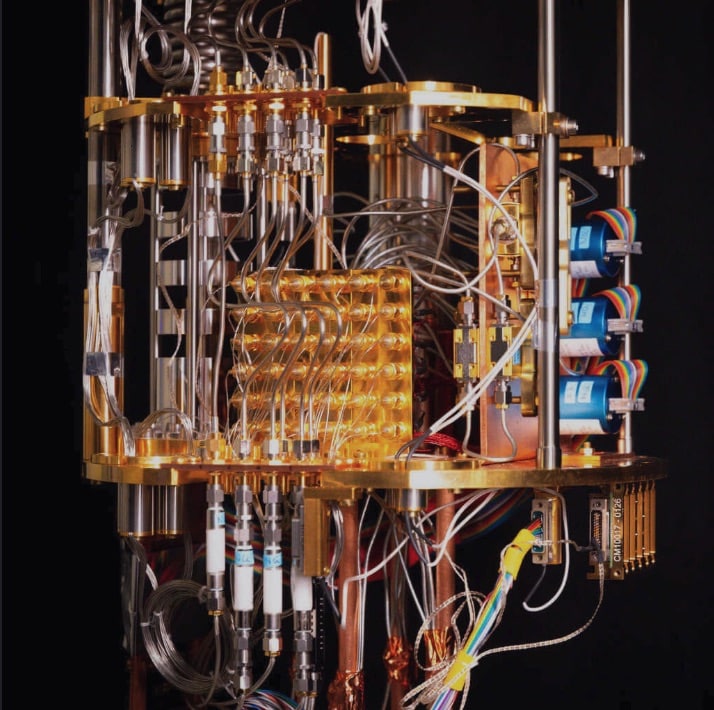For years, quantum computers have sounded like something out of science fiction — ultra-powerful machines that could crack codes, discover new drugs, or simulate the universe itself. But there’s always been a catch: they’re fragile, expensive, and need vast amounts of energy to operate.
A Canadian startup called Nord Quantique claims to have discovered a solution to one of the most significant challenges in quantum computing: error correction, and it could revolutionize the field.
What’s the Big Deal About This Breakthrough?
Quantum computers run on qubits (quantum bits), which are way more powerful than the bits inside your regular laptop. But they’re also incredibly unstable. Even the tiniest noise, heat, vibrations, or electromagnetic waves can disrupt them. That’s why companies today use dozens or even hundreds of physical qubits just to keep one “logical” qubit stable. It’s like using an entire football team to make sure one player scores a single goal.
Nord Quantique’s innovation flips this on its head. They’ve built something called a bosonic qubit, a new kind of qubit that corrects its own errors without needing tons of backup qubits. That’s like giving each football player their shield, so they don’t need a team to stay upright.
How Does It Do That?
Inside a tiny, frozen aluminum chamber, cooled to temperatures near absolute zero, light particles called photons bounce around in specific patterns. Nord Quantique’s bosonic qubit stores information across several of these light patterns, or modes. If one gets disturbed, the others step in to help resolve the issue. It’s like storing a song in multiple parts; if one note skips, the rest help you hear it right.
This approach, known as multimode encoding, means that one physical qubit corresponds to one logical qubit, a 1:1 ratio. That’s a massive leap forward.
Everyday Life Application
You might wonder, “Why should I care about a computer that works in a freezing lab?”
Because quantum computers aren’t just for scientists, they’ll eventually affect everything:
- Healthcare: Designing better medicines and therapies faster, without decades of trial and error.
- Finance: Running hyper-accurate risk models in seconds, helping prevent economic crashes.
- Climate: Modeling weather and climate change scenarios with unmatched precision.
- Energy: Designing new batteries or materials for cleaner, more efficient energy systems.
- Security: Breaking and remaking the encryption systems we use to protect data, from WhatsApp to national defense.
Nord Quantique claims that their quantum computer will achieve this while using 2,000 times less energy than today’s best supercomputers.
Cracking Codes and Saving Energy
To put things in perspective, cracking a tough encryption key like those used to secure your bank account would take a supercomputer 9 days and 280,000 kilowatt-hours of power.
Nord Quantique’s prototype could achieve this in 1 hour, using just 120 kilowatt-hours. That’s less than what some homes use in a week.
Even better, their machine would fit in a regular data center, occupying the space of a small office room, measuring just 215 square feet.
Fixing Quantum’s Weakest Link
Traditional quantum computers use brute force to fight instability: throw more qubits at the problem. Nord Quantique’s genius move is building fault tolerance directly into the qubit itself. Their “Tesseract Code” helps the system survive common errors, such as bit flips or signal leaks. In tests, the new qubit demonstrated promising reliability after surviving 32 rounds of error correction.
That’s like flying a drone through a storm again and again, and having it self-correct mid-flight every time.
What Follows
The company plans to launch a 100-qubit machine by 2029, with a full 1,000-logical-qubit system by 2031, enough power to rival the most advanced supercomputers on Earth, at a fraction of the energy cost.
It’s a bold timeline, but not an impossible one. As rivals like IBM aim for 10,000 qubits using more traditional methods, Nord Quantique’s smaller, smarter approach may prove faster and more practical.
Quantum computers will work behind the scenes, inside research labs, hospitals, banks, and logistics centers, to solve problems too complex for any conventional machine. With smarter, energy-efficient machines like this, it might arrive a lot sooner than we think.


